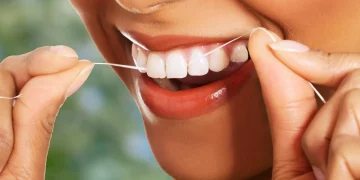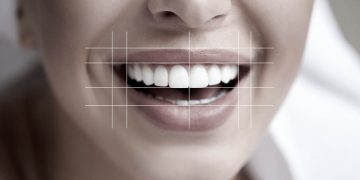Introduction: The Cornerstones of Oral Hygiene
We’ve all been told since childhood to brush our teeth and floss daily, making these habits a regular part of our routines. But many people still wonder: do these simple steps really prevent cavities and gum disease? After all, some individuals may brush their teeth consistently and still experience dental problems. So, how effective is proper brushing and flossing in protecting our oral health? Let’s dive into this question and explore how these practices truly impact your smile.
How Brushing and Flossing Prevent Cavities and Gum Disease
Brushing: The First Line of Defense
Brushing your teeth is the most basic form of oral hygiene, but it’s also one of the most effective tools in preventing cavities and gum disease when done correctly. Here’s how:
- Plaque Removal: Plaque, a sticky film of bacteria, forms on your teeth after eating and drinking. If left untreated, plaque can harden into tartar, which can only be removed by a dentist. Plaque buildup on your teeth leads to tooth decay (cavities) and gum disease. Brushing your teeth removes plaque from the tooth surface, helping to prevent both.
- Fluoride Action: Most toothpaste contains fluoride, a mineral that strengthens tooth enamel, making it more resistant to decay. Fluoride can also reverse the early stages of tooth decay by remineralizing areas that have started to demineralize due to acidic food and drinks.
- Gum Health: Brushing helps prevent gingivitis, an early stage of gum disease. Gingivitis is caused by bacteria in plaque, which irritates and inflames the gums. Regular brushing reduces the buildup of plaque and helps keep gums healthy.
Flossing: Reaching the Areas Your Toothbrush Misses
While brushing is essential, it doesn’t reach every part of your mouth. That’s where flossing comes in.
- Removal of Food Particles: Flossing removes food particles that may be stuck between your teeth, which brushing alone can’t always dislodge. If these particles are left in place, they can lead to plaque buildup and eventually to cavities or gum disease.
- Preventing Gum Disease: Flossing is key to preventing gum disease (periodontitis). When plaque builds up along the gumline, it can cause inflammation and lead to gum infection. By flossing, you reduce the risk of plaque turning into tartar, which irritates the gums and leads to more serious issues.
- Clean Between Teeth: Many cavities form between the teeth, an area your toothbrush can’t always reach. Flossing regularly helps ensure that no food or plaque is trapped between your teeth, preventing decay in those hard-to-reach areas.
The Science Behind Brushing and Flossing
Research has shown that regular brushing and flossing significantly reduce the risk of both cavities and gum disease. Here’s a look at the science:
- Cavities: Tooth decay occurs when bacteria feed on sugar and produce acids that erode tooth enamel. Brushing your teeth helps eliminate the bacteria and sugar that can lead to cavities. Flossing adds another layer of protection by cleaning the areas where food can get stuck between teeth, which can’t be cleaned by brushing alone.
- Gum Disease: Gum disease is caused by the bacteria found in plaque. When plaque is left to accumulate, it irritates the gums, causing them to become inflamed, bleed, and recede. Gingivitis is the mildest form of gum disease, but without treatment, it can progress to periodontitis, a more severe condition that can lead to tooth loss. Brushing and flossing help reduce plaque buildup, thus preventing gum disease.
- Scientific Studies: Multiple studies have confirmed the link between proper oral hygiene and a reduction in the incidence of cavities and gum disease. For instance, the American Dental Association (ADA) recommends brushing for at least two minutes twice a day with fluoride toothpaste and flossing once a day to keep both cavities and gum disease at bay.

Common Mistakes That Can Reduce Effectiveness
Even if you brush and floss regularly, certain mistakes can limit their effectiveness. These include:
- Brushing Too Quickly: Brushing for less than two minutes or rushing through the process can leave plaque behind, especially in hard-to-reach areas. Proper brushing involves thoroughly cleaning every surface of each tooth.
- Using the Wrong Toothbrush: A hard-bristled toothbrush can damage your gums and enamel. The ADA recommends using a soft-bristled toothbrush to gently remove plaque without causing harm.
- Flossing Incorrectly: Flossing too aggressively can cause gum damage, while not using enough floss may leave food particles behind. It’s important to use about 18 inches of floss and gently slide it between each tooth to remove debris without hurting the gums.
- Not Flossing Regularly: Skipping flossing or doing it irregularly can result in plaque buildup between your teeth. Flossing should be done at least once a day for optimal oral health.
When Brushing and Flossing Aren’t Enough
While brushing and flossing are essential, they may not always be sufficient on their own to completely prevent cavities and gum disease. Regular visits to the dentist for professional cleanings and checkups are necessary for several reasons:
- Tartar Removal: Tartar is hardened plaque that can’t be removed by brushing alone. Your dentist or hygienist will use specialized tools to remove tartar, preventing gum disease and decay.
- X-Rays: X-rays can reveal cavities between your teeth and below the surface that can’t be seen with the naked eye. Early detection of these issues allows for early intervention.
- Professional Advice: Your dentist can recommend personalized oral care routines, products, and treatments, such as fluoride treatments or sealants, to further protect your teeth.
Conclusion: The Power of Proper Brushing and Flossing
Proper brushing and flossing are undeniably effective in preventing cavities and gum disease when done correctly and consistently. While they may not be a cure-all, these simple habits form the foundation of good oral hygiene. By brushing for two minutes twice a day with fluoride toothpaste and flossing daily, you significantly reduce the risk of dental issues. However, it’s essential to complement these habits with regular dentist visits to ensure your oral health is maintained in the long term.
By incorporating proper brushing and flossing into your daily routine, you’re taking proactive steps to keep your teeth healthy, your gums strong, and your smile bright for years to come.













































Discussion about this post